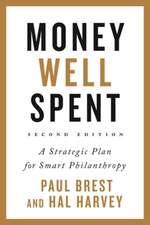Pricing Credit Products
Autor Robert L. Phillipsen Limba Engleză Hardback – 9 iul 2018
Preț: 434.85 lei
Preț vechi: 511.58 lei
-15% Nou
83.21€ • 87.05$ • 69.12£
Carte disponibilă
Livrare economică 12-26 martie
Specificații
ISBN-10: 0804787204
Pagini: 256
Dimensiuni: 186 x 263 x 22 mm
Greutate: 0.7 kg
Editura: MK – Stanford University Press
Cuprins
This chapter motivates the book. It argues that lenders are ideally placed to perform price optimization because of their access to deep information about their customers and transactions. However, for historical reasons, lenders have lagged retailers, particularly online retailers, in their adoption of price optimization. More widespread adoption of price optimization among lenders would not only improve their business performance but also might help prevent a repeat of the 2008 financial crisis.
Credit is available to consumers in a wide range of forms, under a wide range of terms, and from a variety of institutions. This chapter describes the most important forms of consumer credit in different countries and the various institutions that offer credit. It begins with a brief history of consumer credit. This history is needed to understand some of the peculiarities of the present-day consumer credit markets and variation among countries. This chapter also describes the different processes used by lenders to compute and quote prices to consumers.
Risk is one of the defining characteristics of credit, and every lender needs to understand loan risk and how it interacts with pricing. This chapter discusses the sources of credit risk and how they can be measured. It shows how credit scores can measure risk and how they can be calculated using historical data. It also shows how differential price sensitivity by risk tier leads to price-dependent risk.
A key component of price optimization in lending is understanding how the profitability of a loan will change as a function of the price. This requires careful accounting of how various elements of loan cost and revenue will be realized over time and how the risks of default and repayment influence these streams. This chapter discusses each element of incremental loan profitability and how they can be calculated. It shows how each of these elements varies with the price and other characteristics of the loan. These calculations are performed in detail for an example simple loan and then extended to more complex loan structures. This chapter also discusses risk aversion and argues that a lender with a large portfolio of loans should act risk-neutral in evaluating and pricing individual loans.
This chapter provides a brief review of the basics of consumer price response. It shows how a price-response function for a loan is the result of the variation of willingness to pay across the population. Different distributions of willingness to pay give rise to different price-response functions. The price sensitivity for a loan at a particular price can be measured by the slope, hazard rate, or elasticity of the price-response curve at that point.
One of the key steps in price optimization is estimating the price-response curves associated with different pricing segments. There are a number of techniques for doing this using historical data. The chapter describes the process in detail using logistic regression applied to a data set derived from an online auto lender. Different approaches to estimating price response derived from the field of machine learning are discussed. The chapter concludes with a discussion of the use of data-free approaches such as conjoint analysis and surveys when historical price response data is not available.
This chapter discusses how price-response differs among different types of customer for different types of loans offered through different channels and how transactions can be segmented in order to take advantage of these differences by charging a different price to each segment. The chapter gives an overview of the economic theory behind pricing segmentation and also shows how superior pricing segmentation can provide a strategic advantage for a lender.
This chapter describes how the price-optimization problem can be formulated and solved. It starts by deriving the profit and revenue maximizing conditions for a single simple loan with and without price-dependent risk. It then extends the discussion to the case of price-dependent risk and the case of multiple loans for many different pricing segments. In most cases, lenders impose constraints on the prices. This means that finding the set of prices that best meets the business goal of the lender while simultaneously satisfying all of the constraints is a problem of constrained nonlinear optimization. The chapter discusses the issues of infeasibility and multiple solutions that can arise in such a problem. Finally, it discusses how an efficient frontier can be used to visualize the tradeoffs between two different business objectives.
Price optimization typically assumes (often implicitly) that consumers are rational in the sense that they make perfect financial decisions appropriately evaluating all options against their preferences. However, both experience and academic research shows that consumers often behave in ways that are far from rational. These deviations from rationality include the use of such heuristics as mental accounting and debt account aversion along with time-inconsistent preferences. This chapter discusses the implications of such deviations from rationality for loan pricing and for regulations.















